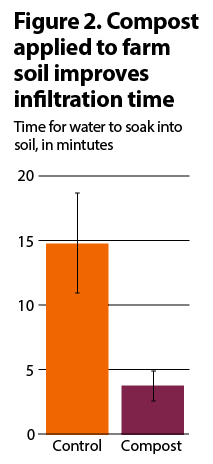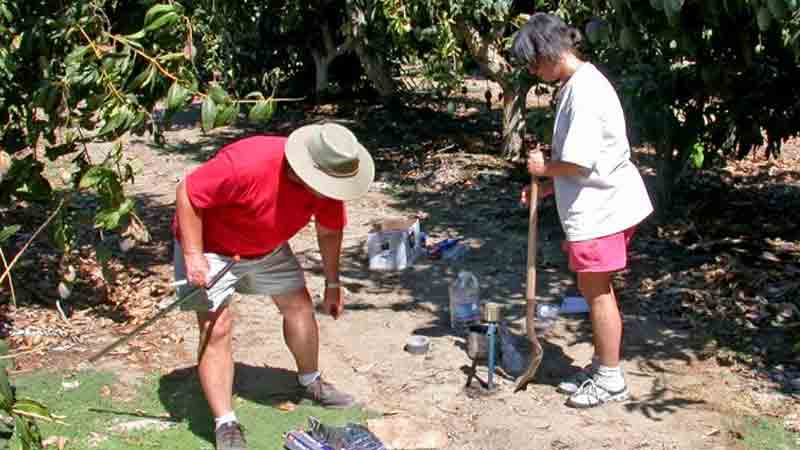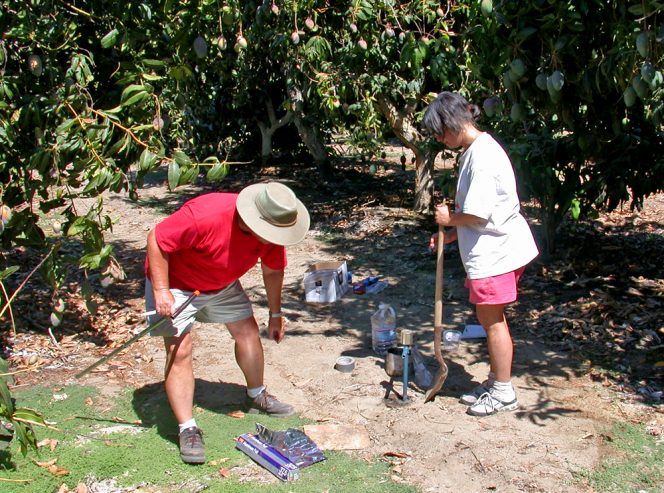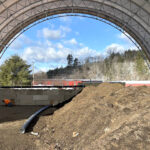
Sally Brown
Back in the early 1970s, scientists had already realized that adding compost to soils improved soil physical properties. They were measuring soil bulk density, water infiltration rate and water holding capacity. While much has been done since then, just about all of it is confirming or adding to what has been known.
We also now know the importance of putting that information into the broader context of the world we live in. A world where climate change and water scarcity are real concerns. A world where Drawdown is offering potential solutions and Farm Efficient Irrigation is one of them. Part V of our series — presented in two parts — shows you that a healthy soil is likely the best and cheapest irrigation system there is.
The Drawdown authors note that 70% to 80% of all the water we use requires pumping and moving. Water is heavy and pumping it requires a lot of energy. They also note that using efficient irrigation systems, such as sprinkler or drip, would cut energy use and save water by up to 40% and 25%, respectively. According to Drawdown, irrigated cropland covers 320 million hectares, of which 53.8 million hectares use either drip or sprinkler systems. Conventional irrigation, e.g., center pivot, costs about $670/hectare to set up. Going efficient with drip systems runs you a lot more — about $1,575/acre. In terms of operation, conventional systems cost about $274/ha/year to run, with the more efficient systems coming in at $151/ha/year. To put those costs into perspective — you can likely get 10 tons of compost delivered to your farm for well under $200/hectare. Biosolids and manure are a fraction of that cost and water savings are just one of the benefits that you get from using them.
Reframing The Irrigation Discussion
It is highly likely that the authors didn’t consider what happens by putting organics down on the soil and the benefits to soil physical properties that help use that water efficiently. One of my favorite scientific papers about organics was published in 1981, “Changes in soil physical properties due to organic waste applications,” by Khaleel, Reddy and Overcash. I’m going to use that old paper to reframe the Drawdown discussion on carbon and water savings associated with efficient irrigation systems.

Corn on biosolids treated soil (left) on same day as strongly wilted corn on control plot (right). (From 1974 Epstein and Chaney compost application to Woodstown silt loam.)

Here’s what Khaleel et al had to say in 1981 (excerpted from the paper’s abstract): “Based on data from 12 different sources, 21 soil types, 7 waste types, and 8 crop types, a linear regression analysis of observed increases in soil organic C as a result of waste applications on percent reduction in bulk density indicated a highly significant relationship (r* = 0.69**). The results of an exponential multiple regression analysis of percentage sand and increase in organic C percentage on the percent increase in water holding capacity indicated that approximately 80% of the observed variations in percent increases in water holding capacity, at both field capacity and wilting point, could be attributed to variations in soil texture and soil organic C increases.”
To translate: the authors looked at all of the papers they could find where different types of organics (manures, composts and biosolids) were added to soils and measured changes in soil physical properties. In a nutshell, they found:
- Adding organics increased soil carbon
- When you increase soil carbon you decrease soil bulk density
- Soil texture (something you can’t change) and total carbon explain how much water the soil can hold.
- More organic matter means the soil holds more water
 What Khaleel et al’s conclusions meant then are the same as what they mean now. Adding carbon to the soil increases the amount of water that plants growing in the soil can access. That will typically happen for multiple reasons. First, lower bulk density means more pore space. More pore space means more room for the soil to store water. In short, higher organic matter soil will hold more water than a low organic matter soil.
What Khaleel et al’s conclusions meant then are the same as what they mean now. Adding carbon to the soil increases the amount of water that plants growing in the soil can access. That will typically happen for multiple reasons. First, lower bulk density means more pore space. More pore space means more room for the soil to store water. In short, higher organic matter soil will hold more water than a low organic matter soil.
Second, their findings mean it is easier for water to soak into the soil. With a heavy rain, more water will soak in rather than run off of the surface. That is also true for irrigation. With less efficient irrigation systems where water application isn’t more targeted, more of the water added will soak in rather than run off.
Khaleel et al cite a study from 1971. Biswas and Khosla (1971) compared a range of application rates a year for 14 to 19 years. Here’s a comparison of the impact from 2 of the rates — 2.7 and 10.5 tons per year of carbon (in this case compost) for 14 to 19 years. Bulk density decreased from 1.6 g cm3 to 1.18 g cm3 for the higher rate of compost. Water content of soil increased from 12.6% by weight to 46% by weight. Much more recently, S. Brown and M. Cotton observed a similar phenomenon in California. Soils were sampled on farms that had used compost over time.
What was found confirmed what Khaleel at al said. The more compost added, the more carbon was in the soil. We saw reduced bulk density and higher water content in soils that had been given lots of compost (Figure 1). We also saw that those same soils let the water soak in much faster (Figure 2).
Sally Brown, BioCycle’s Senior Adviser and long-time Connections columnist, is a Research Professor in the College of the Environment at the University of Washington. The second part of this article is another compost math lesson
References
- Brown, S. and M. Cotton. 2011. Changes in soil properties and carbon content following compost application: Results of on-farm sampling. Compost Sci. Utiliz. 19:88-97.
- Brown, S., K. Kurtz, A. Bary and C. Cogger. 2011. Quantifying benefits associated with land application of organic residuals in Washington State. Environ. Sci. Technol. 45:7451-7458.
- Khaleel, R., K. R.Reddy, and M.R. Overcash. 1981. Changes in soil physical properties due to organic waste applications: A review. J. Environ. Qual. 10:2:133-141.














